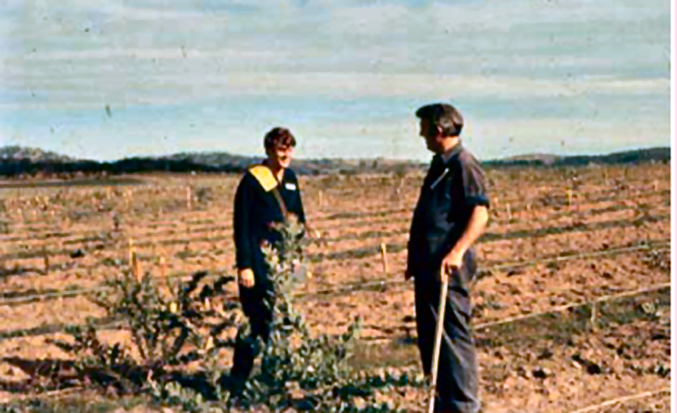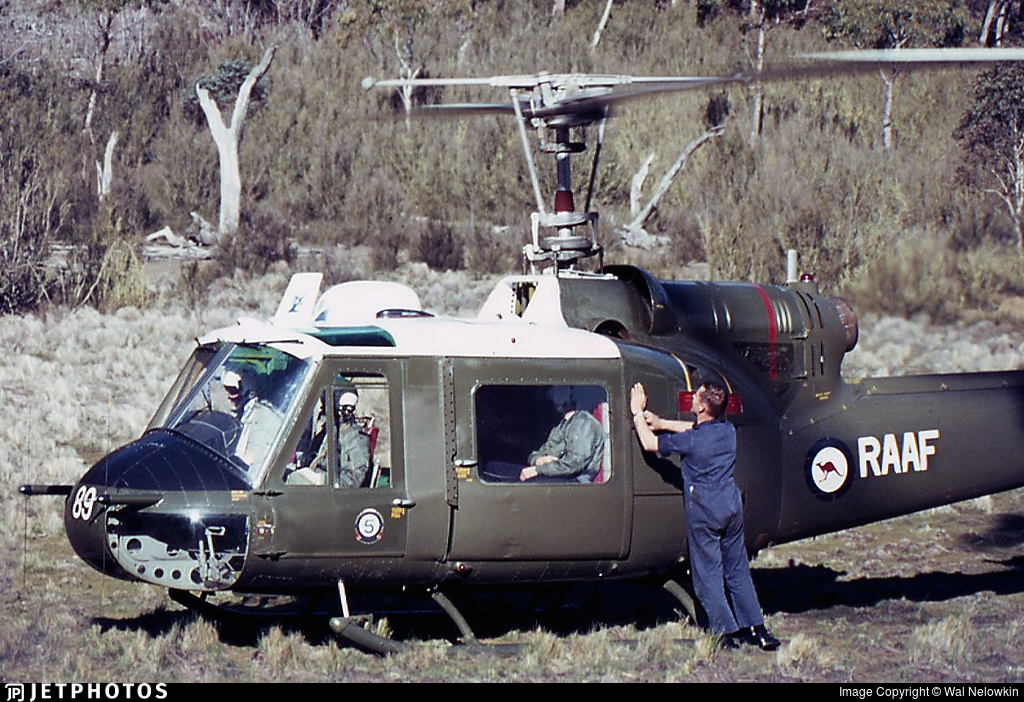|
|
||
|
||
|
Privacy Policy | Editorial Policy | Profit Policy | Join the Association | List of Members | Contact us | Index | Links |
||
|
Back Go to page: 1 2 3 4 5 6 7 8 9 10 11 12 13 14 15 16 17 18 19 20 Forward |
||
|
|
||
|
Contents:
Tuggeranong ACT Bomb range clearing.
|
||
|
The people I meet.
As most people would know, I like to keep the body beautiful by spending many hours each day hard at work at the gym, I try to keep a low profile so as not to discourage the hundred or so other users of the facility who, try as they might, are not able to match my magnificence.
Normally I now try and use the equipment that is situated in a corner or in a darkened area so as not to distract those lesser souls and I’ve found that this seems to work as those requesting autographs from my wonderful self have since dropped from two to three hundred a day to about 50.
Of course, while readying my perfect personage ready for the gym, I have to pay particular attention to masking the Radtechitis that emanates from the body. I start the day by rising at 3.00am, spend an hour or so under a piping hot shower, lathering up with a cake of Lifebuoy soap, (I use a fresh one each day) then fill the bath with ice cubes and spend 40 minutes immersed in the cubes to close the pores. With pores all closed, I apply a layer of Vaseline all over which traps the Radtechitis inside. Only then am I safe to exit the house without attracting the masses.
Once suitably prepared, my day then starts. As it is usually still only a bit after 5.00am, with the gym not opening until 6.00am, I don the Dunlop Volleys and hooking up the hound, pound the footpaths around the block, covering the 10km circuit in 30 mins. I then return the exhausted dawg to the home, hop into the trusty 62 VW Beetle and proceed to the gym, arriving a few minutes after opening.
Normally I’m the only one there at that time, 6.00am being a bit early for Mr and Mrs Average, so I can use any of the machines I like but normal persons start to arrive around 7.00am and as I usually spend at least 10 hours a day working away vigorously in the Gym, as the people arrive I usually slip away un-noticed to a quiet corner to continue.
Normally I’m very careful when moving around the gym as I wouldn’t want to rub off any of the protective Vaseline. If any Radtechitis did escape it would affect the gentle sex more so than their male counterpart as it seems it contains a hidden ingredient that, for reasons so far unknown, tends to arouse their primitive matronly instinct. Unfortunately, on this day while soaking up the copious perspiration from one’s flawless body, I inadvertently removed a minute portion of the protective armour and allowed a tiny whiff of Radtechitis to escape and be whisked outside via the air conditioning ducts.
Some miles away, the lovely Vanessa Niemand was at her kitchen sink, peeling onions with a sharp knife, while preparing the evening’s salad, when that minute amount of Radtechitis wafted into her home vie an open window. The effect was immediate.
Dropping both onion and knife into the sink and tossing the apron and dish cloth onto the kitchen table, she was up on one foot and spinning around in numerous 360s in a clockwise direction with head held high trying to determine the source of that Radtechitis. Eventually, realising it was coming from a north westerly direction, it was on with the UG boots then she dashed outside, grabbed the small scooter from the startled young bloke next door and heading off at a million miles an hour, headed for the gym.
Arriving at the gym, she dashed inside, disregarded the signing in as per Covid requirements and sought me out. Luckily, Ryan Short, the resident PTI torturer, who, as he normally does, was working on several lovely young ladies and saw what was about to take part. He grabbed an orange barrier and rushed to my rescue but even though Ryan, who is normally described by all female gym goers as the irresistible hunk, was no match for Vanessa who brushed him aside as though he was a 10 stone weakling and wrapped herself upon my person in order to soak up some of that Radtechitis.
|
||
|
|
||
|
Under sufferance, I allowed this to continue for 57 minutes before extracting myself from her clutches.
Such is the torment a Radtech must endure.
|
||
|
An Irish woman of advanced age visited her physician to ask his advice on reviving her husband's libido. 'What about trying Viagra?' asked the doctor. 'Not a chance', she said... 'He won't even take an aspirin.' 'Not a problem,' replied the doctor. 'Give him an 'Irish Viagra'. 'What is Irish Viagra?', she asked. It's when you drop the Viagra tablet into his coffee. He won't even taste it. Give it a try and call me in a week to let me know how things went.' It was a week later when she called the doctor, who directly inquired as to her progress. The poor dear exclaimed, 'Oh, faith, bejJeezus and begorrah! T'was horrid! Just terrible, doctor!' 'Really? What happened?' asked the doctor. 'Well, I did as you advised and slipped it in his coffee and the effect was almost immediate. He jumped straight up, with a smile on his face, a twinkle in his eye and with his pants a-bulging fiercely! With one swoop of his arms, he sent me cups and saucers flying, ripped me clothes to tatters and took me then and there passionately on the tabletop! T'was a nightmare, I tell you, an absolute nightmare!' 'Why so terrible?' asked the doctor, 'Do you mean the sex your husband provided wasn't good?' 'Freakin' Jaysus, it was the best sex I've had in 25 years! But sure as I'm sittin' here, I'll never be able to show me face in Starbucks again.
|
||
|
Caribou A4-208
The following is an update for the article printed in the Magazine, Volume 8, Page 3.
Following the preparation of the aircraft by members of the Ipswich Amberley Aviation Museum (now known as Amberley Aviation Heritage Centre) and the RAAF Amberley Scuba Club, the airframe was given the tick of approval by the Queensland Department of Environment to be transported to Curtin Artificial Reef in Moreton Bay..
Trial carriage by 5 AVN Chinook helicopter was conducted in October 2000 and route selection undertaken. The transfer in November was cancelled due to poor weather and an impending cyclone. The transfer was deferred until around 5 Jan 2001 but later cancelled.
After numerous attempts to get the activity finalised, the Underwater Research Group QLD formerly advised Defence in June 2015 that they no longer wished to have the airframe relocated from Oakey to the Curtin Artificial Reef in Moreton Bay. Since then the airframe has remained at Oakey and has become a candidate for disposal.
PS David bell got in touch, he says: “Whilst the airframe is still at Oakey and being used on occasions for training by fire section, there is a rumour to have the airframe used for another type of training ---- watch this space !
Meanwhile, a number of panels gave been removed ---- for watch faces to be sold as part of the 2021 celebrations !!”
Below, 208 in happier times.
|
||
|
|
||
|
|
||
|
Frognall
Robin Belford ex-Frognall March 1955 intake 9 RAPP/7 FDC, got in touch, he said: .
In a recent RAM edition there was a brief summary by Graham Darley concerning Frognall Fellowship Diploma Course graduates. This brief summary had a couple of errors and prompted me to try and present a more detailed and hopefully more accurate summary, which is below. My summary does contain some uncertainties and correction is invited. It may be of interest to publish the Belford summary and invite comment as it is certainly more detailed and complete than that published Vol 64 Dec 2018 and accessible in the current Vol 70 Jun 2020 issue (from Jim Treadwell's story}, and it may be a useful exercise in order to arrive at an authoritative and accurate historical record.
A brief summary on my post-Frognall years follows. I graduated from No7 FDC Jan
1960, and was posted to ARDU. Then I was selected as one of the original Mirage
III training group and was posted to the School of Languages (LANGSCL) early
1962 to pick up some French before departure. Delays in the program enabled me
to complete the language training syllabus and I then became a French instructor
at LANGSCL and subsequently a LANGSCL graduate as Interpreter/Translator
(French). I finally reached France end 1962, and after two years returned to
Australia in January 196
My summary would serve as a good base to develop a sound history of the early FDC Frognall years , and I forward it in the hope that you may be able to use it. As it stands it is much more detailed than the brief summary already published in RAM. Also attached for your records is a 1948-1972 listing of RAAF radio apprentice intakes. Again this listing is not complete and I therefore suspect that it shows only those who graduated as engineers or technicians. For instance, on my course alone (9 RAPP) there are at least seven names missing, those who did not make it to graduation, and Boyldew, Elliot and Gillette who I believe to be FDC graduates are not listed, hence the (?) beside their names - faulty memory?.
Fellowship Diploma Communication Engineering Courses at Frognall.
The Radio Apprentice School was set up in 1948 at Frognall as the lodger unit with students attending the Royal Melbourne Technical College. All started on the engineering stream and those students who did not remain on that stream were trained as radio technicians. As I remember the complete FDC course progress as initially set up was as follows:
Apologies are made for any inadvertent omissions and errors. Uncertainty is indicated by (?).
No.1 FDC 1953-1954 Don Johnson, Frank Pederick, Don Gray, Viv Norrish, Bob Bell, Ron Clark, Bob Fretwell, Bernie Pollett, Wal Pearson (?). These students were from Radio Apprentice Courses 1, 2 and 3 having graduated from these courses with an Associate Diploma lasting four years.
No.2 FDC 1954-1955 (RAPP No.4 1950-1953) Ian Grant, Ron Hodson, Col Casey, Laurie Hull (3 RAPP) (?).
No.3 FDC 1955-1956 (RAPP No.5 1951-1954) John Ryan, Peter Coutts.
No.4 FDC 1956-1957 (RAPP No.6 1952-1955) Graeme Farthing, Geoff Jensen, Graham Darley, Dave Haber, Peter Coleman.
No.5 FDC 1957-1958 (RAPP No.7 1953-1956) Jim Tanzer, Noel Hadfield, Ross Elliot (?),Dave Gillett (?). This was the last of the two-year FDC stream at Frognall.
No.6 FDC 1958 (RAPP No.8 1954-1957) Bob Dannatt, Geoff Tucker, Graham Boyldew (?).
No.7 FDC 1959 (RAPP No.9 1955-1958) Ron Noble, Rod Harris, Robin Belford, Tim James (8 RAPP), Ken Frith (8 RAPP – did not complete). These students were commissioned as POs wef 1 Jan 1960. These students were the last RAAF FRMTC graduates as the College became Royal Melbourne Institute of Technology RMIT in 1960. They were also the last Frognall Cadet Officers until the inception of DCS in 1962.
The author (Robin Belford) believes that following No.7 FDC the following sequence occurred until the DCS was established, however the Vol 69 edition of RAM in the Frognall history section states that No 8 FDC was the last FDC course; correction may be required concerning these listings.
No.8 FDC 1960 (RAPP No.10 1956-1959) Brian Harris, Jim Noble, Richard Orr, John Allan, Neville Hassen, John Schmidt (8 RAPP), Derek Trushell (8 RAPP). These students were commissioned as POs wef 1 Jan 1960 and subsequent course students completed the FDC year as POs until DCS in 1962.
No.9 FDC 1961 (RAPP No.11 1957-1960) Graeme Rickert, Max Brennan, Neville Middleton, Ron Potter (?), Denis Street(?). These students are thought to be the last FDC graduates from the radio training plan set up in 1948 ie the last FDC graduates before DCS was established. The last Associate Diploma graduates originally from RAPP Frognall before creation of the DCS are listed below – again, apologies for omissions/errors. These members were commissioned as POs upon graduation and are thought to have completed the FDC from DCS. Correction is invited.
RAPP No.12 1958-1961 Rex Bean, John Townsend.
RAPP No.13 1959-1962 Graham Giles, David Hains, Doug Roser, Peter Silcock, Kev Leslie.
Footnote In 1959 there was a number of RAAF ex-apprentices from Frognall and Wagga plus airman entry who completed diplomas at RMTC through selection as post-graduate students. John Harper and Col Ely were two ex-Frognall from RAPP No.3 course, and all the 1959 graduates attended OTS as POs at Rathmines early 1960.
|
||
|
So let’s get this straight. There’s no cure for a virus that can be killed by sanitizer and hand soap?
|
||
|
WWII veteran Lance Cook on 75 years since war’s end
The Beaufighter wasn't the World War II veteran's first choice but the 95-year-old fell in love with it which is why you'll find pictures and models of it around his home. "I wanted to be a mechanic on the mighty spitfire," Mr Cooke said. "But I got posted into a squadron and it happened to be the Beaufighter squadron, the old spits could go but they weren't near as good as the Beaufighters."
Lance still remembers the murmurs of Japan's surrender on August 15, 1945. He was stationed at Labuan as a 20-year-old when gossip started through the latrines of soldiers, colloquially known as the latrine wireless. Mr Cooke has the day documented in a diary. "I have in the diary I got called out of bed at 9pm at night to go down and service the planes, they were going out the next morning," he said.
"They had me up at 5am the next morning to go and see the planes out."
|
||
|
|
||
|
Lance Cooke's Beaufighter squadron with the mighty aircraft.
Mr Cooke had heard through the latrine wireless the reasons for the flights were to send a message to the Commander in Chief of the Japanese Army in Borneo Masao Baba, who had wanted to negotiate terms of the surrender. "As far as the Allies were concerned unconditional meant unconditional and they wanted to talk terms ... but as far as the surrender was it was unconditional and I think they had the planes up for the express purpose, they weren't bluffng," he said.
Mr Cooke joined the Air Force in January 1943. He went through a series of training courses in Tocumwal, Ultimo, Melbourne and Tamworth before he was deployed to Borneo as an aircraft mechanic. He left for Borneo on Mother's Day 1945.
When the war ended, the job of the soldiers continued. However, Mr Cooke soon heard news that would bring him home but it wasn't easy to get leave. "My dad had bowel cancer and he had never mentioned he wanted to see me while the war was on but then he expressed a wish he wanted to see me," he said. "I was his shadow when I was little so I applied for a posing out." When he took it to the orderly officer, Mr Cooke was told to tear up the application and put it in the bin as the chances were so low, but thanks to a loyal squadron leader he was able to get leave.
In fact, his leave was given the highest priority possible and Mr Cooke returned to Australia on November 19, 1945. He was able to spend time with his father in his final weeks - he died on January 1, 1946. Mr Cooke's love of airplanes has remained steadfast and was even passed down to his son who is a pilot.
|
||
|
People are scared of getting fined for congregating in crowds. As is catching a deadly disease and dying a horrible death wasn’t enough of a deterrent.
|
||
|
Incoming call on iPhone can set steel wool on fire.
Chances are, if you’re connected to the interweb and you’ve got an email address, you’ve seen this video, a 5G iPhone is placed inside a ring of steel wool, the phone is rung and before long the steel wool starts to glow red and small flames appear. Click the pic to see the video.
Of course it’s all rubbish.
The video was first shared on 27 December 2019. The caption that goes with the clip reads: “Please share the video before it gets deleted! I don’t know the reason why the incoming call caused the steel wool to ignite. If you have deeper knowledge in physics, maybe you can write an explanation in the comments…”
It also goes on to say: “We used an iPhone 6 for this experiment. The ‘power save’ option was set off. We used steel wool grade 12. The wood table plate (is about 2 inches thick). There was no coil under / within the table”.
The video was subsequently shared on Facebook and other social media platforms, liked and retweeted by users thousands of times. One Facebook share (read idiot) says: “Every smartphone has to produce heavy radiation. Don’t keep it near your head. This is good awareness (for) everyone.” The post has been shared by as many as 15,000 people (once again idiots).
A Twitter post sharing the clip has been similarly retweeted 10,000 times. The post also blames 5G for this phenomenon.
Anyone with a modicum of brain power can see it’s garbage, but the ignorant masses believe it and try and insist we believe it too.
Here’s why it’s garbage.
Rocket engine design.
Ever wondered why rocket engines are bell shaped, the reason is very interesting – see the video below
|
||
|
|
||
|
If you believe all this will end and we will get back to normal once we reopen everything….. Raise your right hand. Now slap yourself with it.
|
||
|
Tuggeranong, ACT - Bombing Range Clearance.
From the book “Service Tales and other War Stories" – John Clarkson
Preparation for the Team
Prior to proceeding to Fairbairn in the ACT, I was attached to No 1 Central Ammunition Depot, the Ordnance Depot at Kingswood, west of Sydney. In late May 1973, a small band of Armourers, including FLTLT Bill (the ferret) Mayne, WOFF Reg Manners, SGTs Bill Altman and Brian Dalziel, CPLs Peter (the Colonel) McGuiness and myself, six trusty Armament LACs and two Plant Operators met at the Explosive Ordnance Disposal (EOD) section of the unit for training in the use of Ordnance locating equipment and some elementary Ordnance Disposal safety procedures.
Bill Mayne and Reg Manners were already members of the EOD section of Kingswood and the rest of us were attached in for the course. This attachment preceded a formal posting to No 1 Central Ammunition depot, Detachment “A”, RAAF Base Fairbairn, to work on the Tuggeranong Bombing Range. I was to learn that the unit had recently searched the high explosive range at Morna point, just north of Williamtown for unexploded ordnance. However, it was revealed that the personnel involved with that exercise were supplied from nearby units for brief attachments and it was difficult to maintain some continuity of personnel, therefore, when work was to commence on the next bombing range, Tuggeranong, it was decided to formally post all the required personnel to the unit. This policy was to prove far more successful as the small unit became a most enviable group of men.
|
||
|
|
||
|
|
||
|
Camp Site A – Tuggeranong, July 1973
When the week’s training was completed, we were all to meet at RAAF Base Fairbairn the following Monday, (4th June 1973), to pick up vehicles, tents, domestic equipment, ordnance locating and digging equipment and a myriad of other support equipment. Transport licences were arranged, rosters were set up for drivers and basically, a small unit was commenced, literally, from the ground up.
A New Unit at Tuggeranong
On arrival at the camp site, the huge marquee was raised, toilets and ablutions constructed, telephone and a landline installed. For the phone, the then Telecom commented they couldn’t install a phone at our camp site, as there was no line from the main road, a distance of about 2½ km. With the help of our Plant Operators and their equipment, we dug a foot deep trench from the main road to our camp site, about 2½ km in length. The Telecom people then came out and installed the phone.
Initially, as the area of the original bombing range had been explained and laid out for us, we then commenced to use the locating equipment, (basically, a sensitive and accurate metal detector), to attempt to locate unexploded ordnance. Some of the team had previous experience of these procedures at the Morna Point range, however, we were to learn that locating a large 500 or 1000 pound steel bomb in beach sand dunes was far different from location small practice bomb tails or heads in a heavy clay and rocky countryside, which already contained all sorts of scrap metal, including old farming equipment, fence parts, etc. Over a period of several months, we leaned a lot about the area, using our equipment to its best advantage and we became much more efficient at locating old practice bombs. The unit became affectionately known as the “Tuggeranong Tent Club”.
|
||
|
|
||
|
Dining Area, Tuggeranong, July 1973
In the summer months, when the temperatures out in the field reached the high 30’s and often into the low 40’s, it was difficult to maintain a full day’s work of hard manual labour, so a new system of working hours was introduced. Considering the ACT was by then into daylight saving, we were required to arrive at the site no later than 5.40am and to be prepared to actually start work right on 6.00am. We would work right up to 12.00 noon, including a half hour break for morning tea and smoko, etc. Then we’d break for three hours during the hottest part of the day to have lunch and a swim in the nearby Murrumbidgee River. Sometimes we’d drive the RAAF vehicles down to the “Pine Island Reserve” on the river, but it was often crowded with picnickers and tourists, so, instead we’d drive over the paddocks to another very attractive swimming location and beach site somewhat downstream from the reserve.
|
||
|
|
||
|
Tuggeranong Range from Campsite – July 1973
Then at 3.00pm, we’d resume our work on the bombing range and work through until 6.00pm. These new working hours actually resulted in far greater productivity as well as keeping the men fit and in good spirits. Over the next 22 months, we dug up nearly 25,000 practice bomb heads. Some of these were the old 11 ½ lb practice bombs and the majority were the old 25 lb ones. Of all these bomb heads, about 30 still had the detonator fitted, so, we had a small demolition from time to time. Although we hoped to find an old 500 pounder, which would have escalated the priority of the project, we never did.
In June 1974, the tent was replaced with 3 ATCO buildings, which provided some well needed facilities, but I think some of the charm of the tent was lost.
Political Climate at Fairbairn
In late 1973, the newly elected ALP government was still stretching its tentacles into all sorts of policy changes from 23 years of conservative government. This was all the more evident as the Australia’s involvement in Vietnam had ceased less than two years previous. On one occasion late in 1973, the Prime Minister, Mr Gough Whitlam, announced that he would invite the North Vietnamese Trade delegation to Canberra for furthering discussions with the North Vietnamese and Chinese people. To this end, he formally requested that RAAF Base Fairbairn provide a formal Guard of Honour for the North Vietnamese Trade Delegates on their arrival. The Base Warrant Officer Disciplinary (WOD) was requested to recruit the necessary personnel for the Guard of Honour and arrange for a few practice parades prior to the actual arrival of the delegates. The men were recruited, but not informed of the recipient of the guard. (It should be emphasised that Guards of Honour were common at Fairbairn and therefore, the men simply thought, yet another VIP visitor).
The practice parades were held without incident and a polished performance was expected. It also needs to be emphasised that a large number of personnel at Fairbairn were wearing their Active Service ribbons from Vietnam and some from other theatres of active service as well as from Vietnam. Therefore, when the men finally discovered just who this Guard of Honour was for, they were totally disgusted. Then on the very day of the delegates arrival, the Prime Minister and all his associates were at the tarmac waiting for their guests. However, there were no RAAF men there for the Guard. Not a single soul had turned up for the parade. The PM was furious and wanted the men charged with all sorts of disciplinary action but no one was charged. It all just blew over and settled down.
Many a lesson was leaned from that little exercise about the values Australian servicemen hold dearly.
The Social Side of the Tuggeranong Tent Club.
When hundreds of these old 25 pound practice bomb heads were being found, the discussion became centred around what to do with all these heads. An instruction came from our Commanding Officer that no bomb heads were to be taken to any scrap metal dealer unless they were broken up beyond recognition, so began the ritual of bomb head breaking. The bomb head was made of cast iron, but contained an 18 pound lead weight in the nose of the bomb head. the firing pin and its associated mechanism were all of brass, so almost overnight, a small industry sprang up.
We all took turns of swinging the large sledge hammer to break up the hundreds of cast iron bomb heads. Once broken, the pieces were separated into their various metal types. We therefore had piles of pieces of cast iron, piles of lead weights and piles of brass firing pins. Prior to submitting any of this material to a scrap metal dealer, we had to further de-identify the components, so, at the unit bar-be-que site, a small forge was set up. An old Holden hubcap was found and used as a mould for molten lead. Another old iron container was found and used as a mould for molten brass. Finally, we had our first load for the scrap metal dealer.
As our site was a short drive from Canberra, we often received visitors from the Department of Air office. Some were from the Armament or Engineering branch, but some were simply Administration or Finance people wanting to sticky beak at our little establishment. Many of these visitors asked what happened to the thousands of cast iron practice bomb heads we uncovered, as they would not have approved the idea of sending thousands of complete practice bomb heads into a scrap metal yard.
|
||
|
|
||
|
Barbecue and smelting site – Sept 1973
They were most impressed on visiting our small unit to see several airmen
working very hard swinging a large sledgehammer breaking these bomb heads up
into small pieces. Little did they realise that these small pieces were then
melted into cast iron ingots the shape of an old Holden Hub Cap.
As I had the largest and strongest frame motor car, (an old 1963 model Mercedes Benz 220S sedan), I was the bunny to take the first load into the scrap dealer. He thought we were dismantling old Navy Communications equipment, so we decided he could believe whatever he liked. He was intrigued by all these lead weights which were the shape of a Holden hub cap! However, the net proceeds of our first sale were quite handsome indeed.
Our Warrant Officer reminded us that a separate bank account needed to be opened, with three signatories, and that the funds were only to be used for unit social functions or comfort items for the unit. It was emphasised that no person would personally profit from any of these takings, so, over the next 22 months, the Tuggeranong Tent Club had a very active social calendar, with dance functions, bar-be-ques, even a couple of theatre evenings.
Colourful Identities.
This was to be Peter McGuiness' last posting, as he elected discharge from here. It was during this posting that I, as a single man again, had socialized with Peter a bit and I lost count of the occasions he got me into some strife or other. One evening, Peter decided to attend an Officer's Dining In night, just for the challenge. He turned up in a fine dinner suit, complete with miniature medals and chatted with the gentlemen during the pre-dinner drinks. It wasn't until just before entering the dining room that a Wing Commander accidentally trod on Peter's foot and apologized, but Peter didn't notice. It turned out that Peter was still wearing “T”boots! So Peter announced to all present that he was none other than Corporal Peter McGuiness, Armourer extraordinaire, and thanked them all for their hospitality.
|
||
|
|
||
|
Bruce Richardson and Peter (The Colonel) McGuiness
Peter’s family had established a Jeans Shop in the Canberra suburbs. Peter on occasions would help out at the shop, or perhaps help by fastening price tags to garments prior to them being displayed for sale. On more than one occasion, Peter would commence this tedious task after first consuming the odd beer or two or three. The end result was often a whole batch of garments which were incorrectly priced or catalogued. Peter, helped by other family members, would then work well into the night rectifying all these price tags.
Social Life in Canberra
I found Canberra to be a strange place for a single man. Initially, it was difficult to find just where one may find mature social gatherings, without the need to simply gather at a pub. I was to find that in Canberra of those days, there were only about three or four hotels in the whole city, but there were simply numerous licenced clubs. Eventually, I was to become a member of a social gathering called “Club 25”. The name was to imply the approximate average age of its members, but the club met twice weekly at good venues for dances and other functions, however, there was a strange atmosphere with the social life in Canberra. This is mentioned in more detail in a later chapter, but it seemed like a city without a soul. There were numerous parties, the social life became a whirl, yet I could not explain why I was still lonely. I still believe that much of the social activities of the day reflected on having a wonderful time, without ever looking at searching for any commitment after that. So, life always seemed to be full without ever seemingly achieving much. I believe it was very different for families living in Canberra. Their suburbs were still a close distance from the city or their work places, especially compared with other capital cities and there were good suburban facilities available for family entertainment.
Trips to Brisbane.
During this time, my mother was suffering from yet another stroke, although she was still living in her own home, so, I tried to get to Brisbane as often as I could to see her and encourage her. In late 1974 she decoded to sell her house and move to a retirement village near Cleveland. Once again, I drove to Brisbane to help her move. Sometimes, I would use the inland Newell Highway though Goondiwindi and Warwick and other times, I would go via Sydney. I found it was about a 15hour drive or so. At least Mum enjoyed my visits.
Culture Change - Helicopter Ground Crews.
From our conversations with some of the 5 Squadron helicopter ground crews at Fairbairn, we heard that a culture of “Us and Them” had grown into the helicopter crews. It seemed that a culture had crept into the helicopter family of those who had experienced Active Service and those who had not. Even though the ones who had seen active service were willing to share their expertise with others, the culture of “Us and Them” still grew. The RAAF in their wisdom found a cure. Over a period of about two years or so, an enormous number of airmens’ postings came out for 5 Squadron crews with helicopter experience, posting them to all sorts of different areas, replacing them, gradually, with other airmen without active service. The aim was to split the “Us and Them” culture and over a period of time, it worked.
The Windup and Closure of the Unit.
Toward the end of 1974, it was evident that we had covered a greater part of the bombing range area. The main target area, a square of about 200 metres each side, had been extensively dug out to a depth of several feet. This was the area, logically, where most of the ordnance had been found. Outer areas had also been covered and searched thoroughly and as quoted before, some 25,000 practice bombs had been recovered. The unit commanders were requested to certify the area as “Clear of Explosive Ordnance”. The end decision was to certify the target area clear of explosive ordnance up to a depth of about eight feet, and the remaining area as “clear”. So, in February 1975, the unit was dismantled and we were all given our respective postings to other units.
Whilst the social life at Tuggeranong and Canberra became quite full, I thought Canberra was an unusual place for a single person; as the party life was hectic, yet one could still be very lonely in the city, however, after a most satisfying posting, all good things have to end, and we were all posted to other units. So in February1975, the site was dismantled and I was posted to No 1 Central Ammunition Depot (1CAMD) at Kingswood, west of Sydney. During the next year or so, one or two of the NCO’s were recalled to the site for a particular question or clarification of the clearance details, but I believe construction commenced soon after on the new suburb of Tuggeranong.
Just a few years later, on a visit to Canberra, I drove out to the area trying to find our old camp site. The suburban construction had progressed so far that I had great difficulty in locating just where previously well-known land-marks were. At least we had the satisfaction that our work permitted the construction of a totally new suburb.
|
||
|
The spread of COVID-19 is based on two factors: 1. How dense the population is 2. How dense the population is
|
||
|
|
||
|
|
||
|
|
||
|
Back Go to page: 1 2 3 4 5 6 7 8 9 10 11 12 13 14 15 16 17 18 19 20 Forward |
||

 5.
I spent most of my time on the Mirage project at Williamtown, HQSC and
Butterworth before resigning as a SqnLdr and joining Thomson-CSF (now Thales) to
open the first company office in Canberra in 1971. Thales is now the second
largest defence company in Australia; it has certainly expanded in the last 50
years. I then migrated to France in 1978 and after four years was subsequently
based in Singapore as the SEA representative (Singapore, Thailand, Burma,
Brunei. Hong Kong, Philippines) for seven years. Back in Australia after 11
years in 1989 I joined TRAC (Thomson Radar Australia Corporation) which won
TAAATS early 1990s; Thales has the contract for the TAAATS successor. I now
reside in the USA, in North Carolina, living in interesting political and
medical times indeed.
5.
I spent most of my time on the Mirage project at Williamtown, HQSC and
Butterworth before resigning as a SqnLdr and joining Thomson-CSF (now Thales) to
open the first company office in Canberra in 1971. Thales is now the second
largest defence company in Australia; it has certainly expanded in the last 50
years. I then migrated to France in 1978 and after four years was subsequently
based in Singapore as the SEA representative (Singapore, Thailand, Burma,
Brunei. Hong Kong, Philippines) for seven years. Back in Australia after 11
years in 1989 I joined TRAC (Thomson Radar Australia Corporation) which won
TAAATS early 1990s; Thales has the contract for the TAAATS successor. I now
reside in the USA, in North Carolina, living in interesting political and
medical times indeed.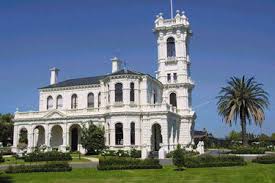
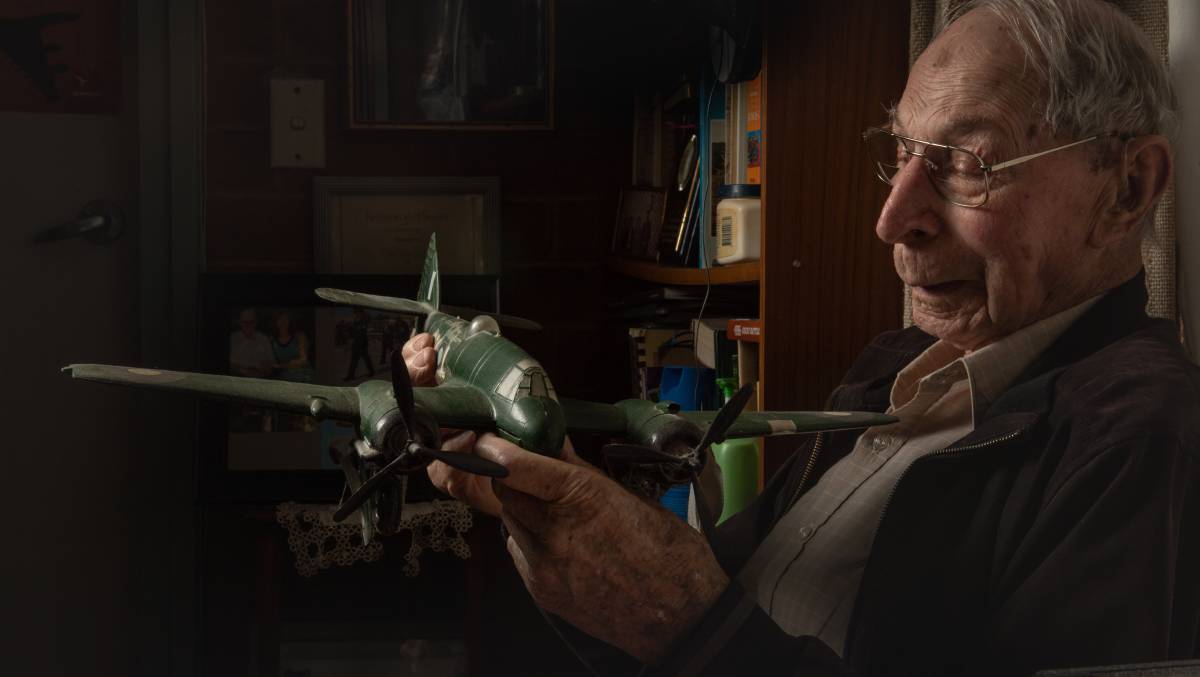
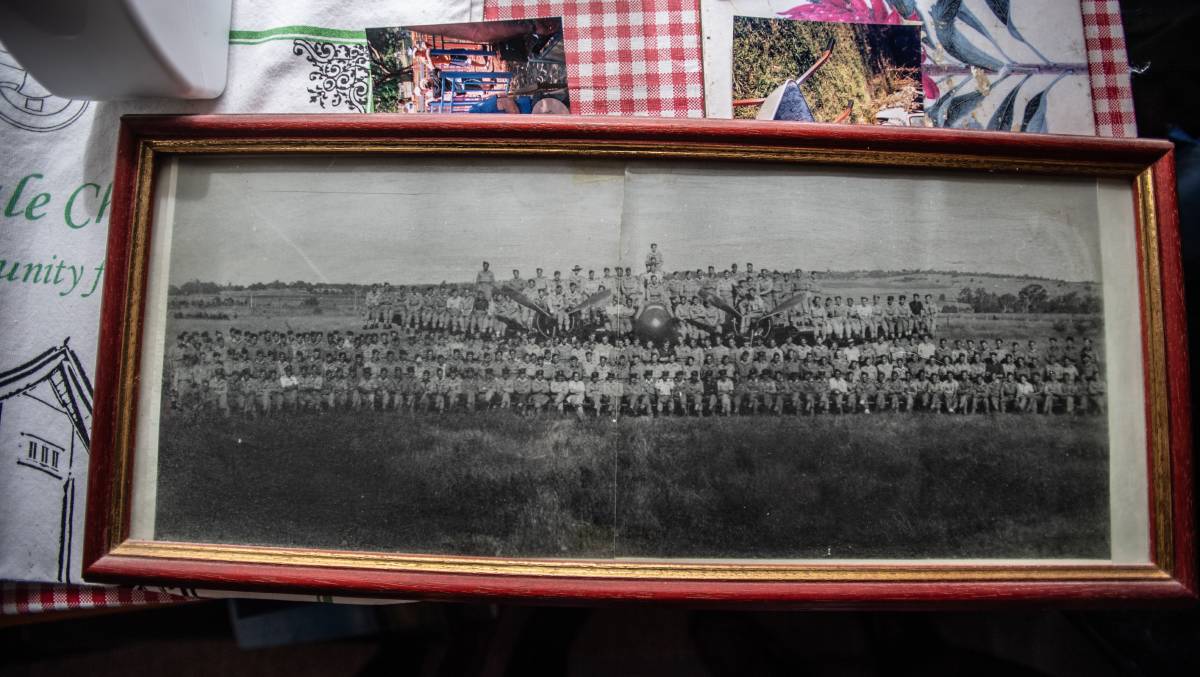
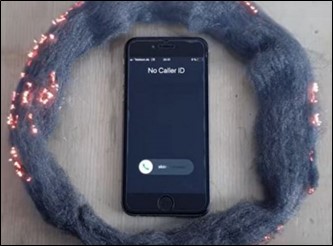
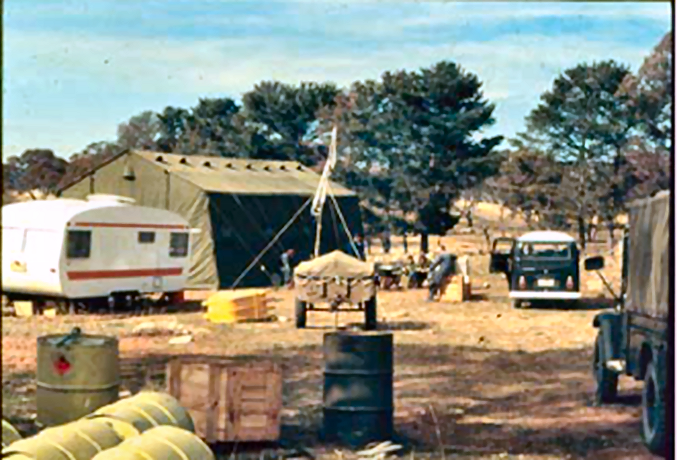
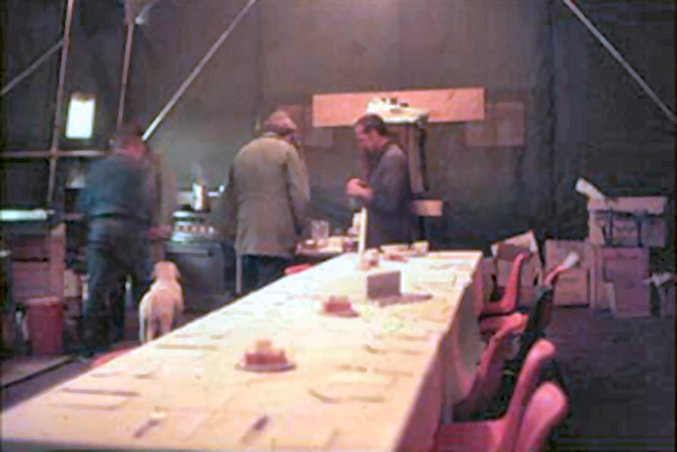
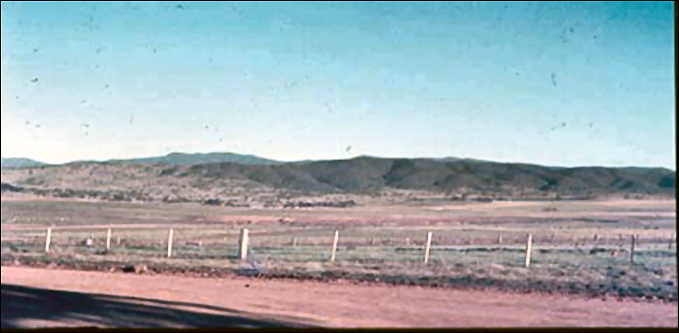
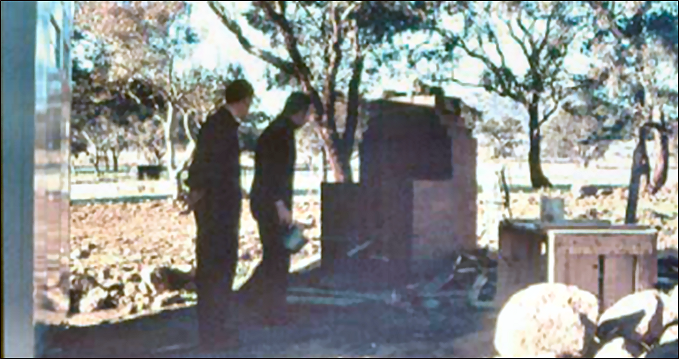
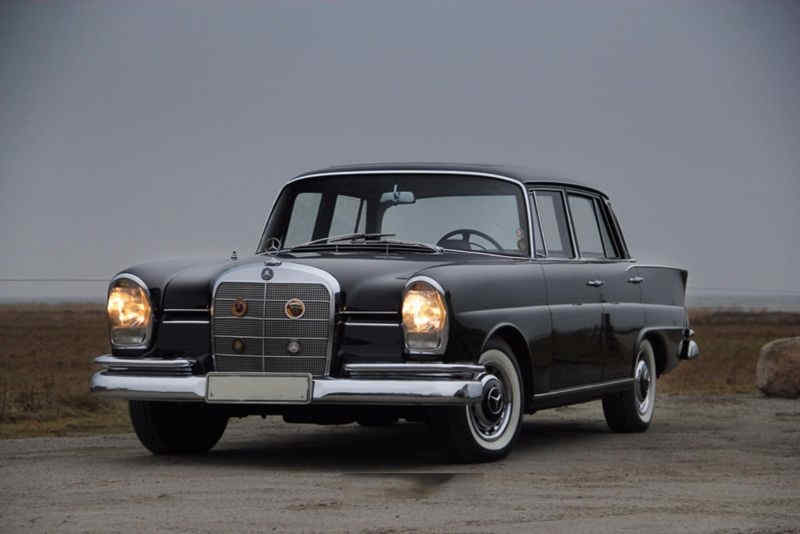 Then the sale of these ingots over the period of the unit’s life proved to be
great benefit to the social structure of the unit. The people at Sims Metal had
no idea where the metal was coming from.
Then the sale of these ingots over the period of the unit’s life proved to be
great benefit to the social structure of the unit. The people at Sims Metal had
no idea where the metal was coming from.